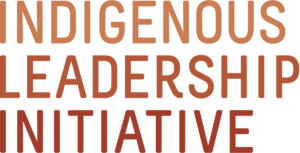Hill Times: Indigenous Partnerships Key to Conservation Goals and Sustainable Prosperity
By Valérie Courtois
Ottawa: April 7, 2021: The pandemic has taken a heavy toll on local and regional economies across the country, and this latest spike in COVID-19 cases will create more uncertainty. But as we head into spring, it is time to plant the seeds for regrowth and recovery. The next few months will be decisive. Even as we focus on jumpstarts for struggling sectors, we must also invest in solutions that flourish year after year and generation after generation.
We need to take the long view on prosperity now more than ever, because when the COVID-19 pandemic starts to recede, the existential threats of climate change and loss of biodiversity will continue to mount. And the impacts of these challenges—from intense wildfires to health impacts—pose significant risks to our Nation and our economy.
Now is the time for bold action.
On April 19, the federal government will issue the first budget in two years. This is a pivotal moment: an opportunity to spur economic growth today and lay the groundwork for a better future. Canada has vowed to protect 30% of lands and oceans by 2030 and slash carbon emissions. It has also pledged to foster equity and sustainable development.
Indigenous Nations stand ready to partner on these goals. We are honouring our responsibility for the land in ways that are good for people and the economy. With added investment, Indigenous Nations can help Canada emerge from the pandemic as a leader in economic recovery, conservation, and climate action.
This approach is already thriving in Indigenous Nations across the country.
More than 25 Indigenous Protected and Conserved Areas (IPCA) are in development and dozens more have been proposed. These areas will ensure healthy lands that sustain caribou, salmon, and clean water and store massive amounts of carbon in soils and wetlands. More than 70 Indigenous Guardians programs operate across the country. These teams of trained experts use Indigenous and western science to monitor water quality, address climate impacts, and support informed decision-making.
IPCAs and Guardians programs form a keystone of economic sustainability across the North. They create good-paying jobs and a diversity of opportunities. Northwest of Yellowknife, for instance, the K’asho Got’ıne hired guardians to partner with federal and territorial scientists on wildlife research last winter. And in northern B.C., the Kaska Dena Council is working with a dozen guide outfitters—including Kaska-owned companies—on plans for operating in the proposed Dene K’éh Kusān Indigenous Protected Area and attracting millions of dollars in tourist business.
They also provide certainty for industry. When Indigenous Nations determine areas they want to protect, they also identify places where development can be considered. And having guardians on the ground creates the conditions for informed consent. The largest nickel mine in the world—Voisey’s Bay in Labrador—advanced in part when Innu Nation Guardians became independent, onsite monitors.
Their success is gaining recognition. At their first official meeting last month, Prime Minister Trudeau and President Biden singled out the leadership of Indigenous Nations and “agreed to be partners in protecting nature, including by supporting Indigenous-led conservation efforts.” And they acknowledged the importance of working with Indigenous Peoples “in advancing climate solutions and protecting nature.”
To read the rest of the op-ed, go to the Hill Times.


